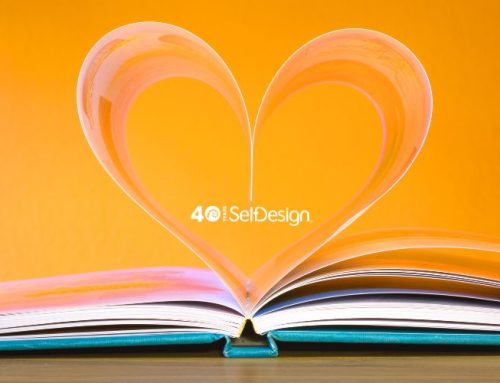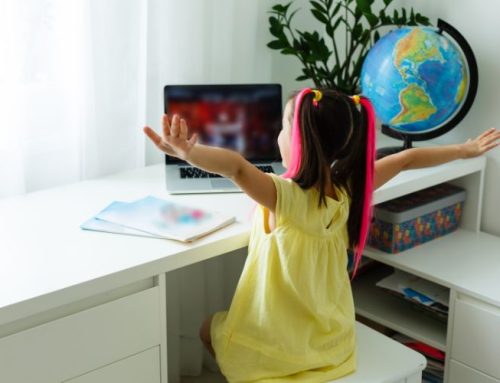Inclusiveness is core to SelfDesign’s values, beliefs and philosophy.
Our personalized approach to learning provides room for all learners, regardless of ability, background, learning style, culture, race, beliefs, or gender identity and expression. SelfDesign celebrates diversity, differences and variability in its learners and seeks to help every learner realize their full learning potential.
“We see our role as being here to support each learner, to hold them up as they explore their interests and passions and grow, learn and develop,” says Nikki Kenyon, SelfDesign’s Principal of Educational Programs.
And we’re so committed to ensuring our programs are inclusive and supportive, we use the best tools around to help us improve.
These include the Universal Design for Learning framework, which we started applying to our program design just a few years ago.
Universal Design for Learning meets SelfDesign: Independent roots; similar approaches
You may have heard of the term “universal design.” Universal design is accessible design. It is the design of buildings, products and environments that allows all people to use and interact with them easily, regardless of age, disability or other factors.
Universal Design for Learning applies that concept to education. It is a way of thinking about education and learning that gives every learner an equal opportunity to succeed. Drawing on insights from neuroscience and leading-edge practices in educational design and implementation, it advocates the use of a variety of teaching methods, modes and tools, with adjustments made for each individual learner’s strengths, interests and needs.
It aligns closely with SelfDesign’s own approach and principles of learning, as well as its values and beliefs. The goal with Universal Design for Learning – as with SelfDesign – is that learners have choice and flexibility in how they access material, engage with it, and show what they know.
In short, it places each learner at the centre of their own learning and engages them in their own, personal experience of learning.
The two approaches are similar, but they came about separately. SelfDesign (then called Wondertree) got its start in 1983. The Universal Design for Learning framework was first defined in the 1990s by the Harvard Graduate School of Education and the Center for Applied Special Technology, in Boston, but the underlying principles came about earlier, with much of the work happening in the 1980s.
“It’s kind of neat that while SelfDesign was developing its learner-centred approach up here, Universal Design for Learning was also emerging,” Nikki says. “They were completely independent of each other but still came up with very similar principles.”
But maybe that’s what happens when you approach education by starting with the learner. By placing the learner, with their unique, individual needs, abilities and interests, at the centre of their own learning experience, flexible, inclusive and personalized learning may be the inevitable result.
But, Nikki says, “holding to that individual-learner focus can be a bit more challenging in a classroom of 30 kids or when you’re working with groups of learners and you need them all to do something.”
And that’s the opportunity Universal Design for Learning offers SelfDesign. It gives us this great framework to work with when we design resources for the Learning Experiences Library, or when we design camps or grade 10 to 12 themes or courses.
“It’s a tool – a very powerful tool – to make sure we’re building as much flexibility and accessibility as possible into the heart of each of our offerings,” Nikki says. “Are we offering multiple means of representation? Multiple means of access? Multiple means of expression? Do learners have the opportunity to take in the information in a way they need to and share it in a way that they need to? That has always been a pillar of what we do at SelfDesign, but the universal design framework now gives us specific language and helps us ensure that we are meeting those needs.”
Education designed – with every single SelfDesign learner in mind
“SelfDesign is committed to creating and providing a curriculum and learning events and offerings that are designed right from the start with every single one of our learners in mind,” says Education Program Team Lead Janice Green. She and her team recently presented a series of Universal Design for Learning workshops to SelfDesign educators. “By removing obstacles and providing a flexible curriculum when we apply Universal Design for Learning, we allow for accessibility and extend the opportunities that will challenge our learners.”
The overall goal is to create learners that are purposeful and motivated in their learning, resourceful and knowledgeable in how they approach learning opportunities, and strategic and goal-directed in their learning.
“By using this approach, SelfDesign offers something for everyone,” she says. “To ignite learners’ passion, we welcome many, many methods of engagement and encourage that engagement to continue, deepen and grow at each learner’s own pace and according to their comfort levels.”
For example, many learners embrace opportunities for working together in groups, but others can find group work intimidating or difficult. Some learners prefer a free-flow feel to their learning, while others demand routines or need step-by-step processes. When we use Universal Design for Learning as a foundation for the way we design our education programming, we create space for all learners to engage in our kindergarten to grade 12 offerings and curriculum.
It’s just one example of how SelfDesign invests in creating an inclusive environment for the benefit of all learners, allowing them to feel safe and welcome, no matter what their abilities, background, learning style, culture, race, personal or spiritual beliefs, or gender identity and expression.
~
Interested in learning more about how SelfDesign applies Universal Design for Learning to the everyday learning experience? Check our blog over the coming weeks as we explore this topic further.







